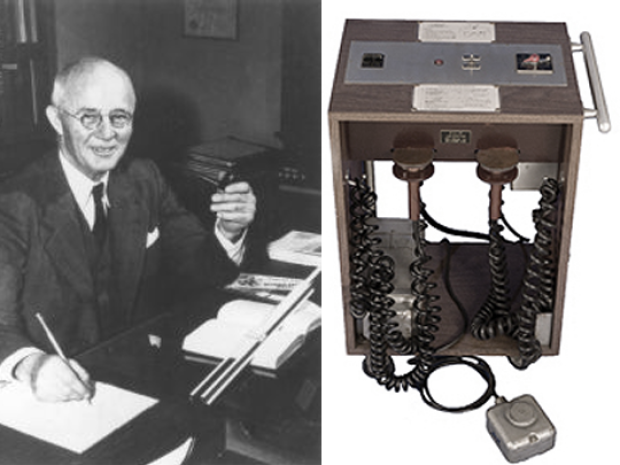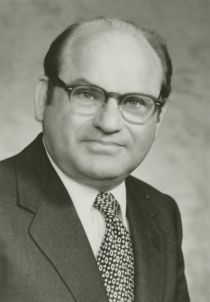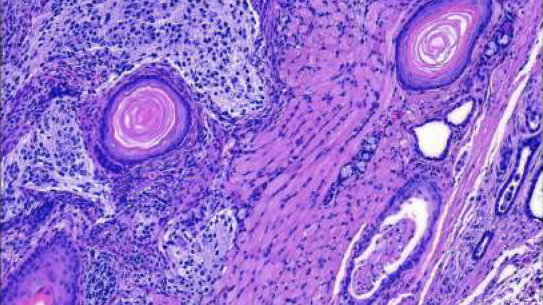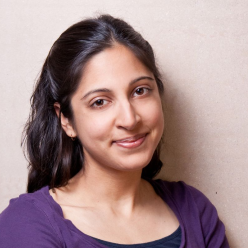Becoming protectors of the heart
Setting the pace for cardiac care

The Bee Gees may have written the definitive rhythm for CPR with their hit Stayin’ Alive, but it was Tandon alumni William Bennett Kouwenhoven (1906, 1907) and Barouh Berkovits (1956) who set the standard for modern-day cardiac care. While they attended the School of Engineering a half-century apart, both have gone down in Tandon history for using their engineering know-how to save the lives of countless cardiac patients.
Well before bioengineering became a watchword, Brooklyn native Kouwenhoven engaged in collaborative research with clinicians hoping to study the effects of electric shock on the human body. The research was funded by Con Ed — an early example of industry-academic partnership — because of the high incidence of death among their linemen, who when shocked on the job were subject to ventricular fibrillation (VF), an irregular rhythm in which the heart becomes unable to pump blood and fails.
In the course of that research, he discovered that administering a second jolt of electricity restored regular contractions, making the fibrillating heart beat normally again, and in 1950 he helped develop the first closed-chest cardiac “defibrillator.” While testing the unit, Kouwenhoven found that a patient’s blood pressure rose slightly when the electrodes of the device were applied, even before any current was triggered. That finding led him to speculate that pressing rhythmically on the chest could cause the blood to circulate, leading to the development of manual CPR.

Barouh Berkovits
Years later Berkovits was hired as director of cardiovascular research by the company manufacturing Kouwenhoven’s AC defibrillators. There he hit upon the idea that using DC current would be safer and more effective, and the model he patented in 1962 quickly became the gold-standard technology for cardiac resuscitation.
Berkovits also went on to invent the “demand pacemaker,” which monitors heart rhythm and sends electrical pulses only if the heart is beating too slow or misses a beat, and medical historians point to his body of work as the impetus for the modern hospital cardiac-care unit.
Mending broken hearts
If Barouh Berkovits made the modern cardiac unit possible, Assistant Professor Irene de Lázaro is working to transform the type of care possible there.
De Lázaro — who, in addition to her post at Tandon, is a member of NYU's Cardiovascular Research Center and holds a cross-appointment to Langone’s Division of Cardiology – explains that if you cut yourself, you will probably heal readily, since skin cells have the ability to regenerate. That’s not true, however, of the more than two billion cardiac muscle cells in the human heart, since most of those cells, known as cardiomyocytes, lose the ability to divide soon after we are born. That means that someone who suffers a heart attack, for example, will not grow new cells to replace those that die.

At Tandon’s NanoBioEngineering for Tissue Reprogramming and Regeneration laboratory, de Lázaro is working to change that situation by investigating the mechanisms by which cells reprogrammed in-vivo contribute to regeneration — work that could one day make it possible to regenerate or build an entire heart or other vital organ.
An ounce of prevention
Until the day it’s possible to regenerate a damaged heart, preventing that damage in the first place is imperative, and Tandon researchers are working on a variety of methods.
For example, Professor Emeritus Kurt Becker, an expert in the field of electron-driven processes in plasmas, has employed colloidal gold nanoparticles to co-develop a new, more sensitive test strip for cardiac troponin I (cTn-I), a biomarker common in heart attack victims, which, if detected earlier, could be used to help prevent heart attacks before they occur.
Take the research being done by Weiqiang Chen, Associate Professor of Mechanical and Aerospace Engineering and Biomedical Engineering, who was recently elected as a Fellow of the American Heart Association, one of the world’s preeminent organizations of cardiovascular and stroke professionals. Chen was honored, in part, for his analysis of individual vascular smooth muscle cells in abdominal aortic aneurysm (AAA), an enlarged area in the major vessel that supplies blood to the aorta that is often called “the silent killer” because most go undetected until they rupture.
His research, which involved using cutting-edge ultrasound tweezers not only shed light on the physiological differences between healthy and diseased cells, but helped clinicians predict the progression of AAA and assess potential drug effectiveness.
The quicker a clinician can detect anomalies in blood flow and oxygenation levels, the better the chance that a patient can avoid devastating consequences like stroke, and another faculty member, Professor Andreas Hielscher, the chair of Tandon’s Department of Biomedical Engineering, is pushing the envelope on just how quickly.
Recently, Hielscher, who is renowned for developing new medical imaging technologies to provide information about the blood and oxygen supply in various tissues — work that had proved especially useful in the care of diabetic patients with peripheral artery disease (PAD) – joined forces with an NYU Langone neurologist who had a novel idea for a new stent (a small tube used to hold open passages in the body, including narrowed arteries). The neurologist envisioned a stent that could both directly monitor and control blood flow to the brain: unfortunately, the engineering involved in the device seemed impossible – until Hielscher and a team of his graduate students stepped in to do just that, developing a flexible dynamic optical spectroscopic system that will non-invasively and non-pharmaceutically monitor and stimulate cerebral blood perfusion.
The team, dubbing themselves CaroRhythm, has applied for federal grants that will allow them to refine their system, and they’re focused on getting their innovation from the lab bench to patient bedside as soon as possible.
Equitable cardiac care
Cardiovascular disease is responsible for nearly a third of all deaths worldwide. Another distressing fact: it disproportionately affects lower socioeconomic groups.

Rumi Chunara
Machine learning can accurately predict cardiovascular disease and guide treatment — but models that take into account the social and environmental conditions that influence diet and exercise are better able to capture risk and outcomes for diverse groups, according to a study by Rumi Chunara, Associate Professor of Computer Science and Engineering at NYU Tandon School of Engineering and of Biostatistics at NYU School of Global Public Health.
A community’s walkability, the availability of grocery stores with fresh produce ... those neighborhood-level factors have complex, non-linear interactions with cardiovascular disease, and machine learning can be particularly useful in capturing such intricate relationships, according to Chunara and her co-authors. And when the goal is more just and equitable healthcare, those machine learning models can help disentangle where troubling disparities are rooted and highlight when intervention should occur.
Saving the life-savers
The strenuous work, heavy equipment, stressful environment, and high adrenaline levels lead to significant physiological strain on firefighters responding to a blaze. Firefighters are, according to some studies, more than a dozen times more likely to suffer a sudden cardiac event when responding to an alarm than when conducting non-emergency duties.
A team of faculty members (Prabodh Panindre, Anurag Manda, and Sunil Kumar) have developed an AI-based mobile app, FireBeats, to monitor the physiological data of firefighters using personal wireless wearable health trackers, evaluate their cardiovascular risk factors, and send out an alert–potentially protecting those protecting us.
Listen to an Interview with Prabodh Panindre
Institute Associate Professor Joseph Chow, the Deputy Director of C2SMARTER, a Tier-1 University Transportation Center, is tackling the issues facing first responders before they even get to the scene.
Emergency vehicles (EMVs) play a crucial role in responding to time-critical calls such as medical emergencies and fire outbreaks in urban areas. Existing methods for EMV dispatch typically optimize routes based on historical traffic-flow data and decide how to preempt traffic signals accordingly; however, traffic engineers still lack a systematic way to address the coupling between EMV routing and traffic signal control. Chow and his co-researchers have proposed using a decentralized reinforcement learning framework they call EMVLight that could make that coupling more seamless, ensuring that emergency workers can respond as expeditiously as possible when the alarm sounds.

